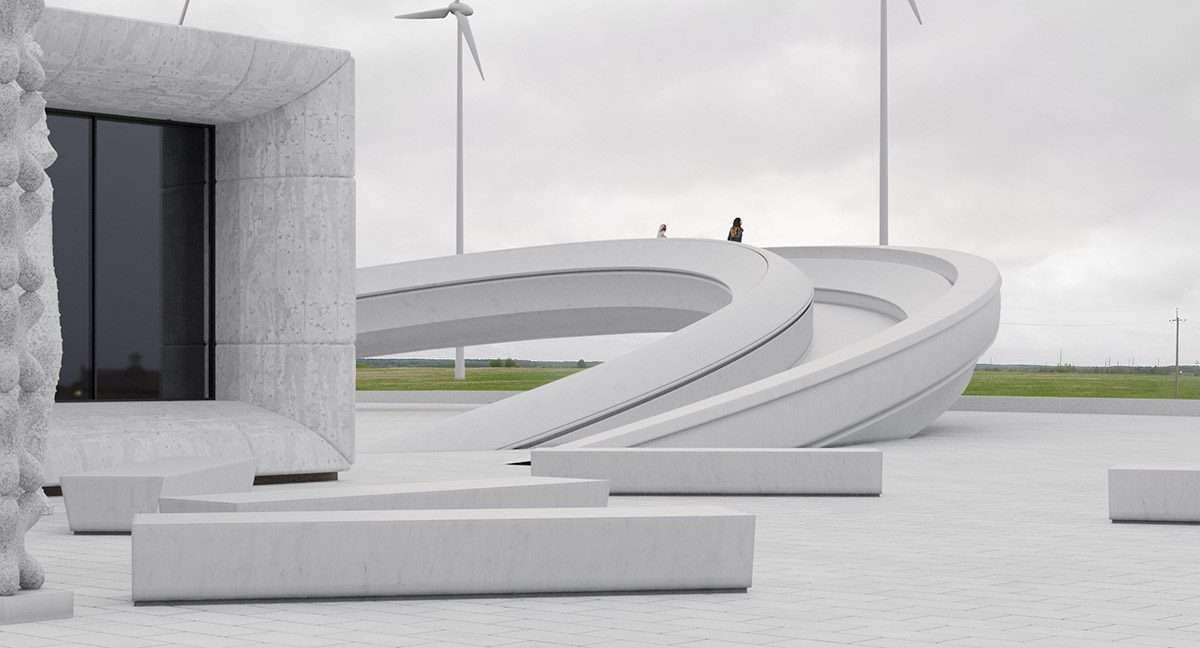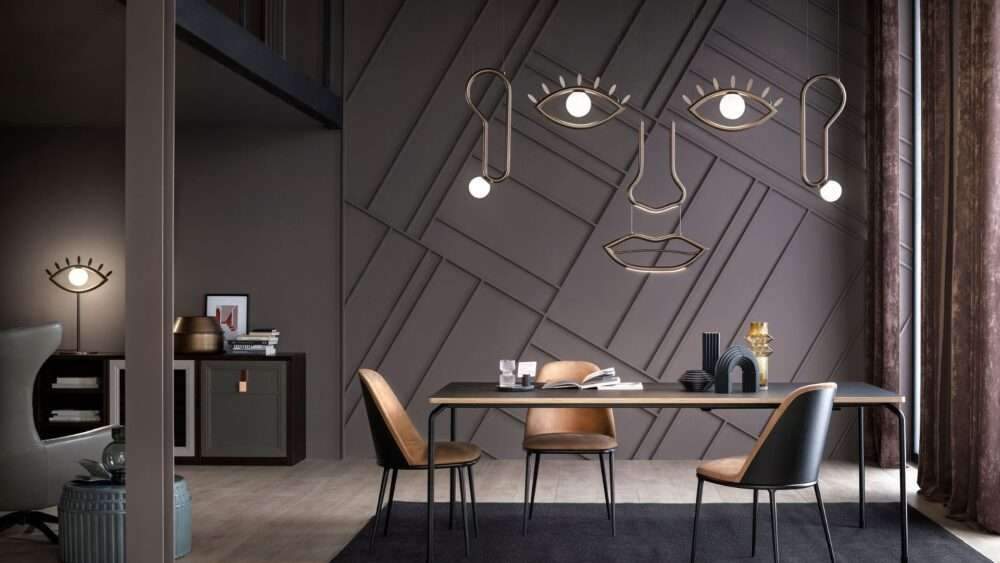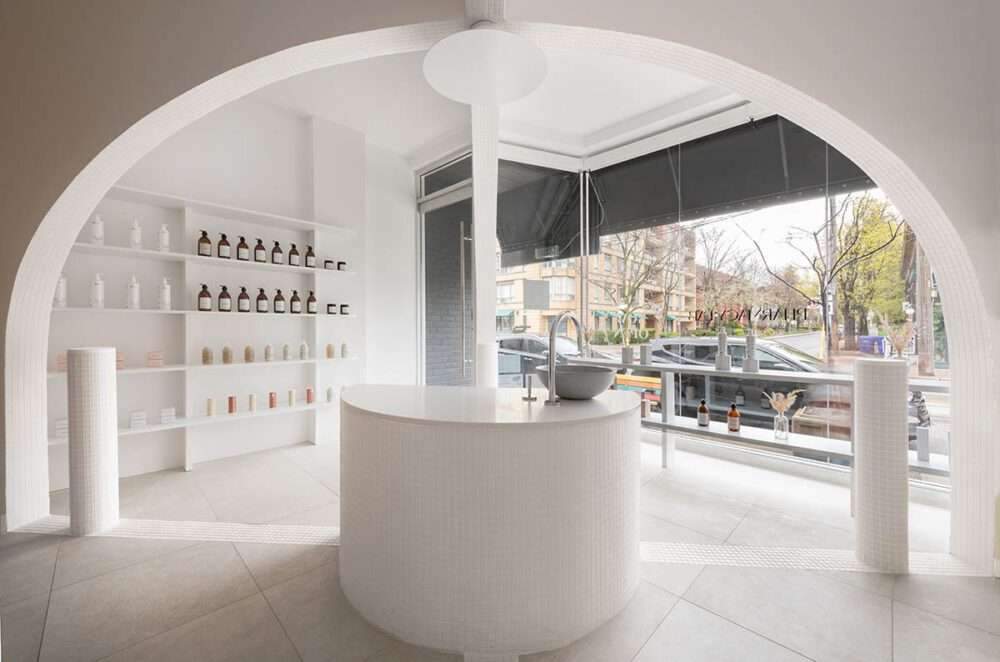Harvard GSD, A group of four early-career architects, has emerged as the finalists for the 2021 Wheelwright Prize. Organized by Harvard University’s Graduate School of Design for the ninth time this year, the $100,000 traveling fellowship seeks to support innovative architectural research forms.
Previous winning proposals included “Being Shellfish: The Architecture of Intertidal Cohabitation” by Daniel Fernández Pascual, “UNDER WRAPS: Architecture and Culture of Greenhouses” by Aleksandra Jaeschke, “Crafted Images: Material Flows, Techniques, and Uses in Set Design Construction” by Aude-Line Dulière, and “Projects: Architecture of Informal Settlements” by Samuel Bravo, to call a couple of.
The jury selected the following to shortlist from a pool of 144 applicants this year:
Germane Barnes: “Anatomical Transformations in Classical Architecture”
Germane Barnes, through his research and style practice, investigates the connection between architecture and identity. Mining architecture’s social and political agency, he examines how the built environment influences black domesticity. He’s the previous Designer-In-Residence for the Opa-Locka Community Development Corporation, where he led a multi-site urban revitalization project. He’s currently the Director of the Community Housing Identity Lab (CHIL) at the University of Miami School of Architecture. Learning from historical data and perspectives from within architecture and cultural and ethnic studies, CHIL posits that the built environment is manipulated by factors that reach far beyond conventional construction methods.
Barnes’s design and research contributions are published and exhibited in several international institutions, including the Museum of recent Art, Pin-Up Magazine, the Graham Foundation, The NY Times, Architect Magazine, DesignMIAMI/ Art Basel, Swiss Institute, Metropolis Magazine, Curbed, and therefore the National Museum of African American History, where he was identified together of the longer-term designers on the increase.
With “Anatomical Transformations in Greco-Roman architecture,” Barnes observes that, while Blackness in America carries a specific connotation, there’s a woeful absence of consideration on how Roman and Italian architecture could also be understood through the lens of non-white constructors. His research proposal aims to look at African diasporic contributions and legacies while creating new architectural possibilities that emerge within Blackness investigations. Barnes proposes to travel throughout Italy and Northern Africa to further his study of how spaces are transformed through the African Diaspora’s fabric contributions.
Luis Berríos-Negrón: “Remediating the Specularium: a deposition of colonial memory that may contribute to the geological timescales of the Anthropocene (so to learn to live, again)”
Luis Berríos-Negrón may be a Puerto Rican experimental architect and environmental artist investigating the sorts of the sculptural and spatial displays being shaped by the forces of worldwide warming. Recent exhibitions and installations include “Anarquivo Negantrópico” (Gammelgaard, Denmark, 2019), “Wardian Table at Agropoetics” (Savvy Contemporary, Berlin, 2019), “Impasse Finesse Neverness” (Museum of Ethnography and Archeology of Bahia, Salvador, Brazil, 2017), “Collapsed Greenhouse at Undisciplinary Learning” (District, Berlin, 2016), and “Earthscore Specularium” (Färgfabriken Konsthal, Stockholm, 2015).
Berríos-Negrón holds a Ph.D. in Art, Technology, and style from the Royal Institute of Technology (KTH) and Konstfack University of the humanities (SE). His dissertation is titled Breathtaking Greenhouse Parastructures, published by Konstfack Collection (2020). He holds a Bachelor of art from Parsons New School and a Master of Architecture from MIT. Berríos-Negrón lives and works between San Juan , Copenhagen, and Berlin.
With “Remediating the Specularium: a deposition of colonial memory which will contribute to the geological timescales of the Anthropocene (so to find out to measure, again),” Berríos-Negrón asks: Is colonial memory the driving force of worldwide warming? This question is conjured so to challenge the scientific debate about the geological timescale of the Anthropocene. From a transhemispheric purview, he observes, the challenge is predicated on an intersectional repass of 5 medicinal gardens that he has worked with on each side of the Atlantic. An indirect and multi-perspectival set of methods are implemented to enact comparative fieldwork and reflexive documents. Together, these cause the installing of a careful research intervention that will display the unfulfilled beginnings of—and more-than-human divergences from—what Berríos-Negrón observes because of the messianic endings and traumatic technics driving the present geological epoch.
Iulia Statica: “Home and Beyond: Women, Care and the Architecture of Migration”
Iulia Statica is an architect and currently a Curie Research Fellow at The Bartlett School of Architecture, University College London. Her research interests specialize in the connection between gender and domesticity within the development and transformation of housing infrastructures and concrete landscapes in Eastern Europe and Latin America. She is the co-founder of Tao DuFour of the Office for Architecture, Urban and Environmental Research, a research-design practice based in NY and London. Their work explores space and political ecology questions, last in their proposal, Together at the Table: Văcărești Park as Intergenerational Commons, as finalists for the competition for the Romanian Pavilion at the 2020 Venice Architecture Biennale. She employs documentary as an integral aspect of both research and practice; her latest documentary — My Socialist Home — is forthcoming in 2021.
Static completed her Ph.D. at the Department of Architecture at the University of Rome “La Sapienza” in 2016 and was awarded the Fellowship in Architecture at the Romanian Academy in Rome (2012- 14). Between 2018 and 2019, she was a Visiting Scholar at the Mario Einaudi Center for International Studies, Latin American Studies Program, at Cornell University. She is that the author of Urban Phantasmagorias: Domesticity, Production and therefore the Politics of Modernity in Communist Bucharest (Routledge, forthcoming 2021).
With “Home and Beyond: Women, Care and therefore the Architecture of Migration,” Statica takes as a point of departure the deficit of care in developing countries thanks to the feminization of migration, seeking to explore new and changing patterns of domesticity. In doing so, Statica plans to interrogate the architect’s role today as both designer and humanist ready to engage the approach to domestic spaces within the context of this global dynamic of migration. In light of current decolonial efforts within the theory and practice of architecture, the proposed research would contribute to understanding contemporary shifting practices of migration from the worldwide South to the worldwide North and their impact on domesticity transformation both as an everyday practice and as an architectural typology.
Catty Dan Zhang: “Shared Air: Space, Automation, and Humanity in Architectures of Meat Processing”
Catty Dan Zhang is a professor of Architecture at the University of North Carolina at Charlotte. Her research and practice explore the planning of an active atmosphere at the convergence of digital media and architecture. Employing atmospheric and computational mediums, her work translates ordinary objects into performative and synergistic systems to see and modulate ephemeral forms.
Zhang has practiced within the US and China. In 2020, she was selected because the winner of the inaugural Emerging Designer’s Exhibition Competition and had her solo exhibition entitled “The Moving Air” at the University of California at Berkeley, exploring a cultural-environmental paradigm of airflow as spatial agencies. Her work has been featured in group exhibitions at venues like the London Design Festival, Carnegie Museum of Arts, A+D Museum, Harvard GSD, among other institutions, and has received recognition in international design awards and competitions, including the AN better of Design Awards and A+D Design Awards. Zhang was a finalist of the 2018 Wheelwright Prize. She earned a Bachelor of Architecture from Tsinghua University, a Master of Architecture with Honors from Washington University in St. Louis, and a Master in Design Studies, Technology concentration, from Harvard GSD, where she was the 2017 recipient of the Daniel L. Schodek Award for Technology and Sustainability.
With “Shared Air: Space, Automation, and Humanity in Architectures of Meat Processing,” Zhang considers air because of the spatial, sensorial, and psychological measure to supply an imaginary model unveiling the emergency and aftermath of the pandemic in meat processing plants across the worldwide. Reflecting upon Sloterdijk’s criticism on fragmented atmosphere and individualized breathing spaces threatening social synthesis in contemporary architecture, the proposed research explores perceptions of shared atmosphere, making a case for humanity and automation. Through visual techniques and field studies, the investigation manifests current urgencies. It contributes to the planning culture as a critical lens through which we rethink infrastructural resiliency and the longevity of technological adaptation.
The 2021 Prize jury includes David Brown, Professor at the University of Illinois at Chicago School of Architecture; David Hartt, Carrafiell Assistant Professor in Fine Arts at the University of Pennsylvania Weitzman School of Design; Mark Lee, Chair of the Department of Architecture at Harvard GSD; Megan Panzano, Assistant Professor of Architecture at Harvard GSD; Sumayya Vally, founder and principal of Counterspace Studio; and Sarah M. Whiting, Dean and Josep Lluís Sert Professor of Architecture at Harvard GSD.
Stay tuned for the announcement of the final winner who will be selected by late April.







